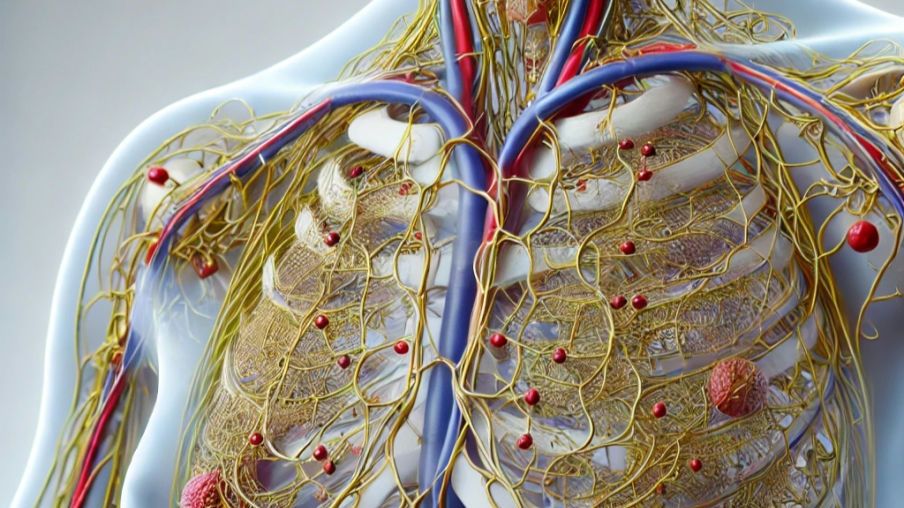“Post-Op Healing: The Role of Lymphatic Drainage in Recovery”
Understanding the Lymphatic System
The lymphatic system is a crucial part of the human body, playing a vital role in maintaining fluid balance, protecting against infections, and supporting the immune system. It consists of a network of lymph nodes and vessels that work to transport lymph, a fluid containing white blood cells, throughout the body. This system is especially important in post-surgery care, where efficient recovery is paramount.

The Role of Lymphatic Drainage in Recovery
After surgery, the body goes through a healing process that can result in swelling, pain, and inflammation. These symptoms are often due to the accumulation of lymphatic fluid in the affected area. Lymphatic drainage, a gentle massage technique, helps to stimulate the flow of lymph fluid and reduce these symptoms, promoting faster recovery.
By facilitating the removal of waste products and excess fluids, lymphatic drainage supports tissue healing and minimizes discomfort. This technique can be particularly beneficial for patients who have undergone cosmetic surgeries, orthopedic procedures, or any operation where swelling is a common post-operative issue.
Summary of Benefits: Post-Operative Lymphatic
Drainage
This summary outlines the key benefits of Post-Operative Lymphatic Drainage (MLD) is a targeted therapeutic approach designed to aid patients in their recovery following surgical procedures. This section highlights the principal benefits of MLD and its important role in enhancing the healing process after cosmetic, plastic, or reconstructive surgeries.
Reduces swelling, bruising, and fluid buildup: Surgical procedures often result in tissue trauma and impaired lymphatic flow. MLD encourages healthy lymph movement, which stimulates excess fluid to drain to the regional pathways of the body, which lessens pain and improves mobility while ultimately reducing swelling, bruising, and fluid buildup.
- Accelerated healing and tissue repair: By increasing circulation and oxygen supply, MLD helps diminish bruising, supports cellular recovery, and facilitates a quicker return to daily routines.
- Prevention of lumps and bumps caused by scarring: Gentle lymphatic drainage reduces the risk of fibrosis and abnormal tissue hardening, creating smoother skin texture and more natural surgical contours.
- Relief from pain, pressure, and skin tightness: Many patients experience immediate comfort after treatment, reporting relief from heaviness and tension, which boosts confidence during recovery.
- Lower risk of complications, including seromas and fibrosis:Consistent MLD se ssions discourage the formation of fluid pockets and abnormal scarring, leading to a safer, healing journey.
- Enhanced surgical results and improved contours: MLD supports outcomes, by reducing swelling for a more refined and aesthetic appearance.
- Increased relaxation and patient empowerment: The calming effect of MLD helps ease stress and anxiety, while patient education during treatment gives individuals valuable tools for self-care and recovery.
Conclusion
Post-operative lymphatic drainage is more than just a comfort measure—it is an evidence-based intervention that alleviates pain, reduces swelling, and mitigates complications. By improving surgical results and boosting patient satisfaction, integrating MLD into recovery protocols offers tangible advantages for both patients and healthcare providers.

When to Start Lymphatic Drainage Post-Surgery
The timing for initiating lymphatic drainage can vary depending on the type of surgery and individual patient needs. Generally, it's recommended to consult with a healthcare provider to ensure it's appropriate for your specific situation. In most cases, patients can begin receiving lymphatic drainage sessions within a few days to weeks after surgery.
It's important to work with a qualified therapist who is trained in lymphatic drainage techniques. They can tailor the sessions to meet your unique needs and ensure that the procedure complements your overall recovery plan.
Choosing a Qualified Therapist
Selecting the right therapist is crucial for effective lymphatic drainage. Here are some tips for finding a qualified professional:
- Check Credentials: Ensure they have specialized training in lymphatic drainage.
- Experience Counts: Look for therapists with experience in post-surgery care.
- Seek Recommendations: Ask your surgeon or healthcare provider for referrals.

Integrating Lymphatic Drainage into Your Recovery Plan
Lymphatic drainage should be considered as part of a comprehensive post-surgery recovery plan. Alongside other modalities such as physical therapy and proper nutrition, it can significantly enhance the healing process. Always discuss with your healthcare team before incorporating new therapies into your recovery regimen.
By understanding the importance of lymphatic drainage and incorporating it into post-surgical care, patients can experience a smoother, faster recovery with minimal complications. Whether you're recovering from a major operation or a minor procedure, this gentle technique offers numerous benefits that aid in restoring your health and well-being.
Linkedin: https://www.linkedin.com/in/massagelakecharles/
Check out my facebook page for tips: URL: http://www.facebook.com/massagetherapypage.com
For more Lymphatic CE Education or Post-Op Lymphatic Drainage Info check out. https://www.lympaticEDU.com
Sharon Sterling #7844, LMT, MLD-C, CLT | CDT, Certified Health Coach